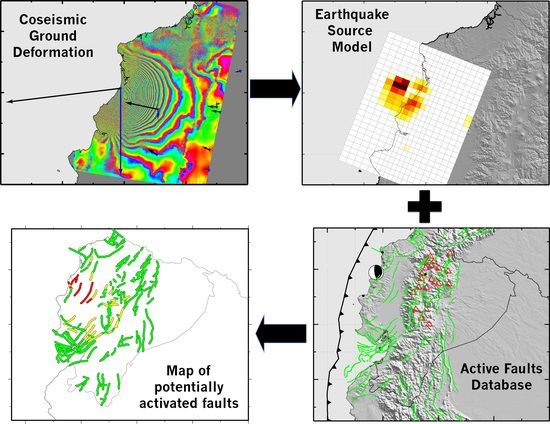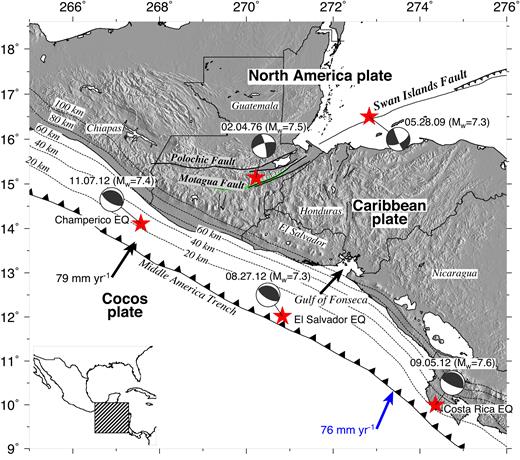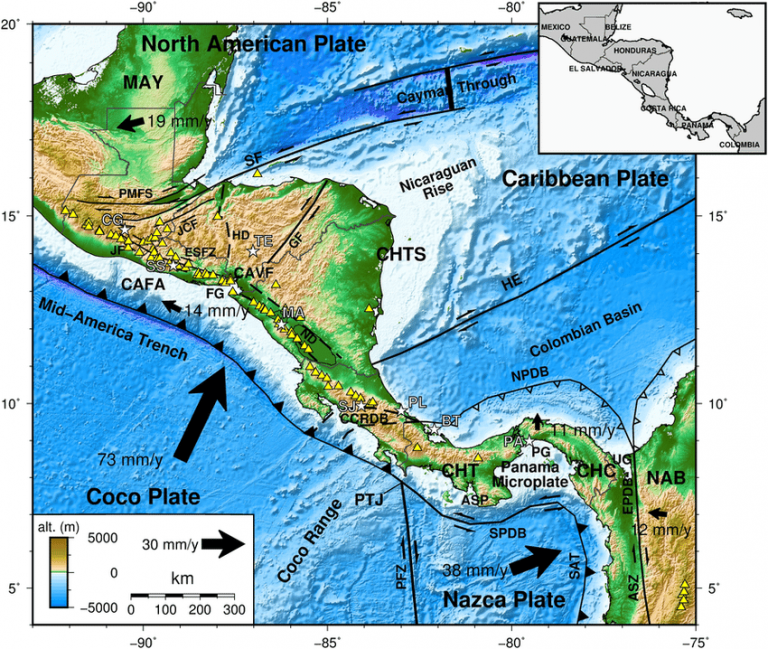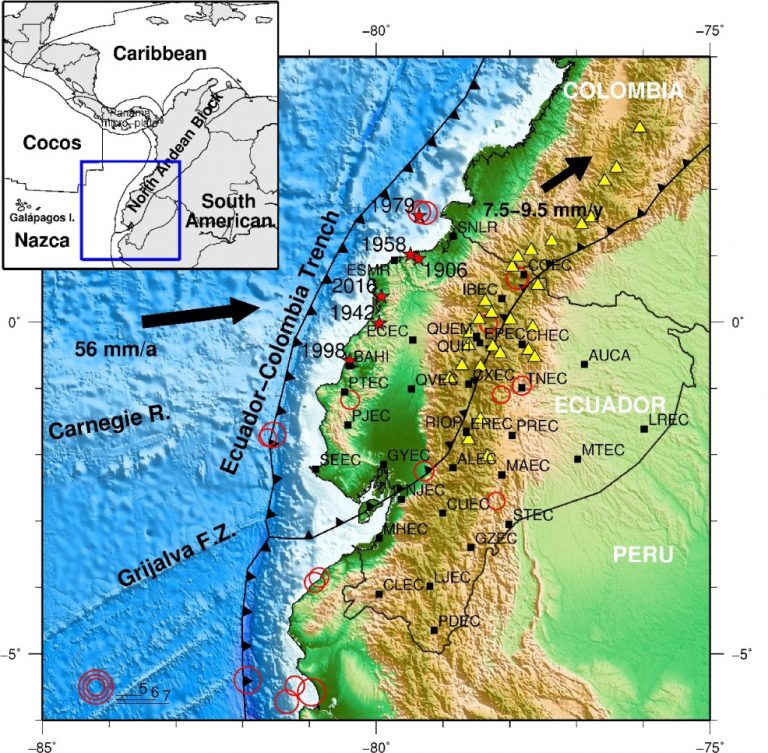Here we present several seismic scenarios related with the main crustal faults in the country. We have characterized the corresponding hazard scenarios in a deterministic way, estimating the peak ground accelerations (PGA) including local site effects.
Autor: miguelgarridocorral

InSAR-Based Mapping to Support Decision-Making after an Earthquake
It has long been recognized that earthquakes change the stress in the upper crust around the fault rupture and can influence the behaviour of neighbouring faults and volcanoes. Rapid estimates of these stress changes can provide the authorities managing the post-disaster situation with valuable data to identify and monitor potential threads and to update the estimates of seismic and volcanic hazard in a region.

GPS constraints on deformation in northern Central America from 1999 to 2017, Part 1 – Time-dependent modelling of large regional earthquakes and their post-seismic effects.
We use continuous and campaign measurements from 215 GPS sites in northern Central America and southern Mexico to estimate coseismic and afterslip solutions for the 2009 Mw = 7.3 Swan Islands fault strike-slip earthquake and the 2012 Mw = 7.3 El Salvador and Mw = 7.4 Guatemala thrust-faulting earthquakes on the Middle America trench.
Analysis of the 2012 Ahar-Varzeghan (Iran) seismic sequence: Insights from statistical and stress transfer modeling
The 2012 Ahar-Varzeghan (Northwestern Iran) earthquake doublet and its following seismic sequence are analyzed in this paper. First, it is examined the time-varying statistical characteristics of seismic activity since the occurrence of the doublet (two large events with Mw = 6.4 and 6.2) that initiated the sequence on 11 August 2012.

The new Central American seismic hazard zonation: Mutual consensus based on up to day seismotectonic framework.
Central America is one of the most active seismic zones in the World, due to the interaction of five tectonic plates (North America, Caribbean, Coco, Nazca and South America), and its internal deformation, which generates almost one destructive earthquakes (5.4 ≤ Mw ≤ 8.1) every year. A new seismological zonation for Central America is proposed based on seismotectonic framework, a geological context, geophysical and geodetic evidence, and previous works.

Interpolation of GPS and Geological Data Using InSAR Deformation Maps: Method and Application to Land Subsidence in the Alto Guadalentín Aquifer (SE Spain)
Land subsidence resulting from groundwater extractions is a global phenomenon adversely affecting many regions worldwide. Understanding the governing processes and mitigating associated hazards require knowing the spatial distribution of the implicated factors (piezometric levels, lithology, ground deformation), usually only known at discrete locations.

Present-day crustal deformation along the El Salvador Fault Zone from ZFESNet GPS network
This paper presents the results and conclusions obtained from new GPS data compiled along the El Salvador Fault Zone (ESFZ). We calculated a GPS-derived horizontal velocity field representing the present-day crustal deformation rates in the ESFZ based on the analysis of 30 GPS campaign stations of the ZFESNet network, measured over a 4.5 year period from 2007 to 2012.

Structural evolution of the El Salvador Fault Zone: an evolving fault system within a volcanic arc
The El Salvador Fault Zone, firstly identifiedafter the 13th February 2001 Mw 6.6 El Salvador earthquake, is a 150 km long,20 km wide right-lateral strike-slip fault system. Ruptures along the ESFZ arethought to be responsible for most of the historical destructive earthquakesalong the El Salvador Volcanic Arc, as well as for most of the currentseismicity of the area.



